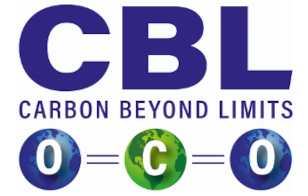Process design
CO₂ is transferred into the aqueous acceptor medium by bringing CO₂ into contact with the acceptor solution. The spontaneously forming water-soluble derivates of carbon dioxide are immediately electrostatically bound by the side group of the amino acid that is used as the acceptor compound, whereby saturation of the uptake of CO₂ only results when all the acceptor compounds have bound at least one water-soluble form of carbon dioxide. In this way, 3 or more moles of carbon dioxide derivates per liter of acceptor solution can be bound without pressure.
Various prior art devices, such as gas scrubbing devices, are available for bringing CO₂ of a gas phase into contact with the aqueous acceptor medium. The use of membrane contactors has proven to be very advantageous, as this enables very space-saving contacting of the fluid streams and at the same time assures very complete removal of CO₂ from the initial gas mixture. In addition, such membrane contactors can be manufactured in a modular design and with readily available and inexpensive plastic components, so that modular systems can be assembled for any quantity of gas flows.
Electrodialysis is carried out using modules with numerous membrane stacks/cell stacks, which makes the process highly energy-efficient, as known in the art. The water-soluble carbon dioxide derivatives are transported through an anion-selective membrane, which prevents diffusion of other compounds that are or may be present in the acceptor solution, e.g. physically dissolved gases such as methane, thus, preventing them from entering the receiving medium. The 2 process components, separation of CO₂ from a gas stream by absorption of carbon dioxide derivatives into the aqueous acceptor solution and the transport of the aqueous derivatives of carbon dioxide into a receiving medium with subsequent release of a CO₂ gas phase, can be performed simultaneously and continuously or at completely different times and also in spatial separation. The extraction of CO₂ from a gas phase requires only a small amount of energy, which is necessary for the circulation of the fluids in the contactor.
Therefore, for example, CO₂ can be separated from a gas phase continuously or on demand with low energy input, whereby the water-soluble carbon dioxide derivatives can be temporarily stored in the aqueous acceptor solution in a storage container at atmospheric pressure. The release of the bound CO₂ derivatives can then be carried out, e.g. during the availability of natural electricity.


